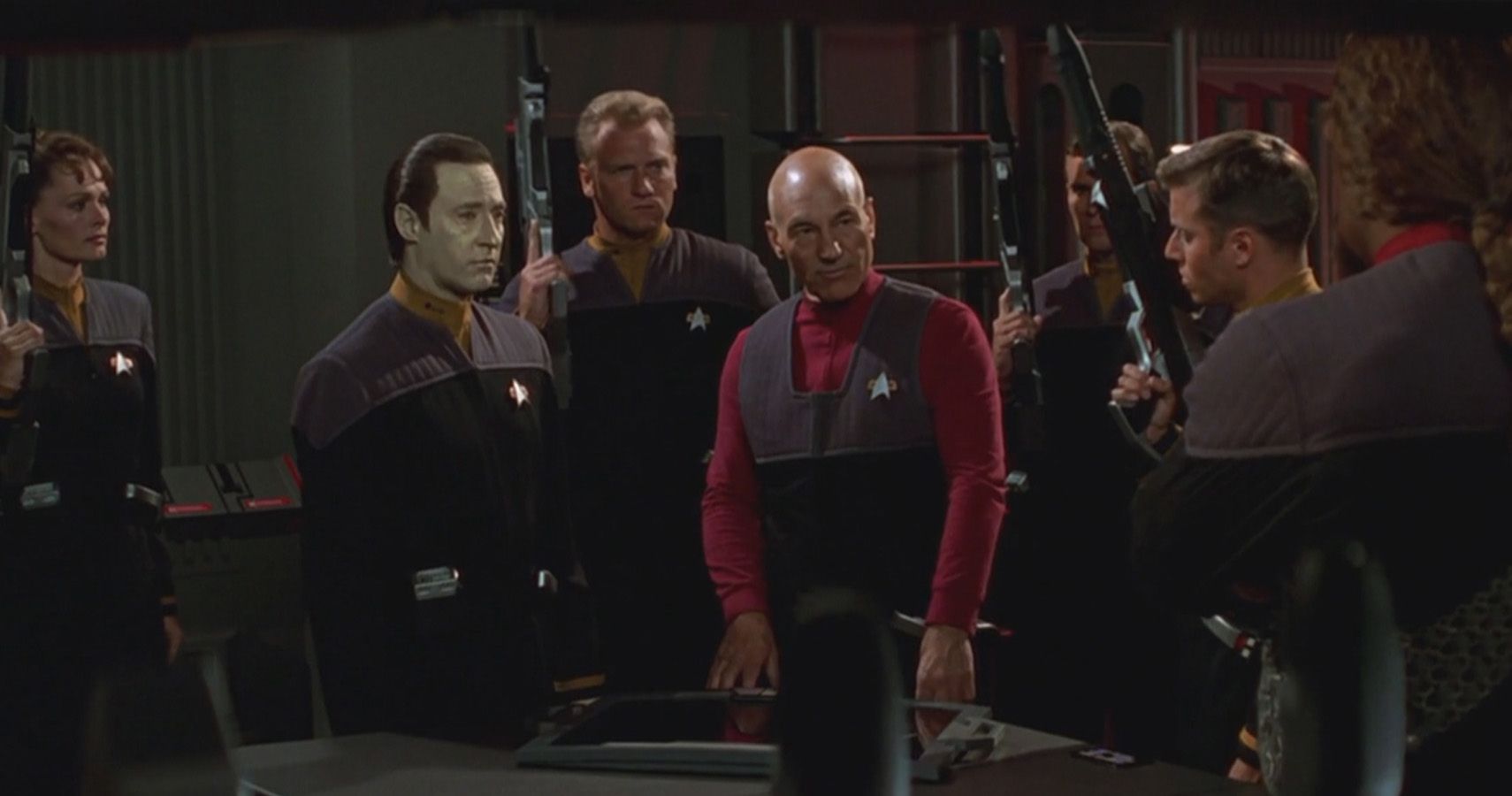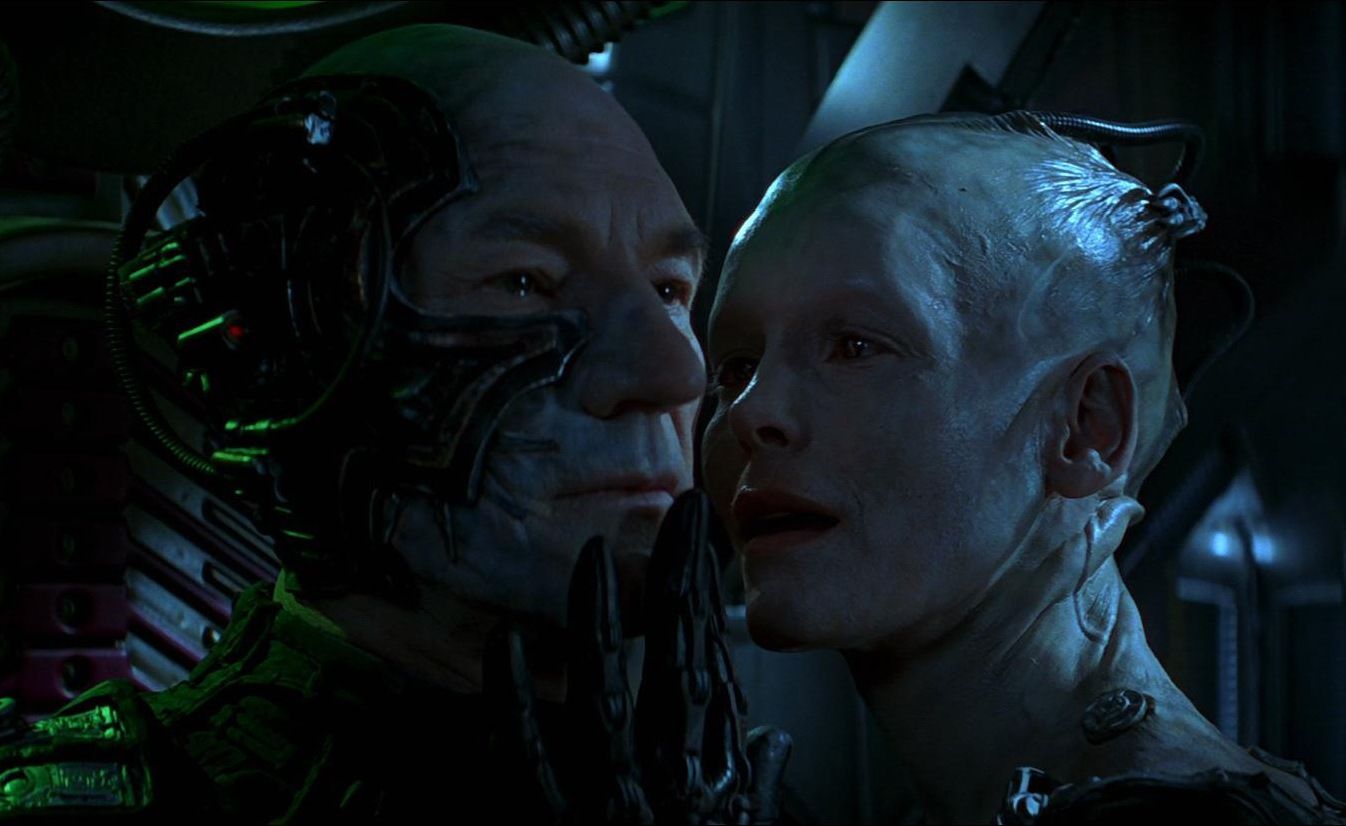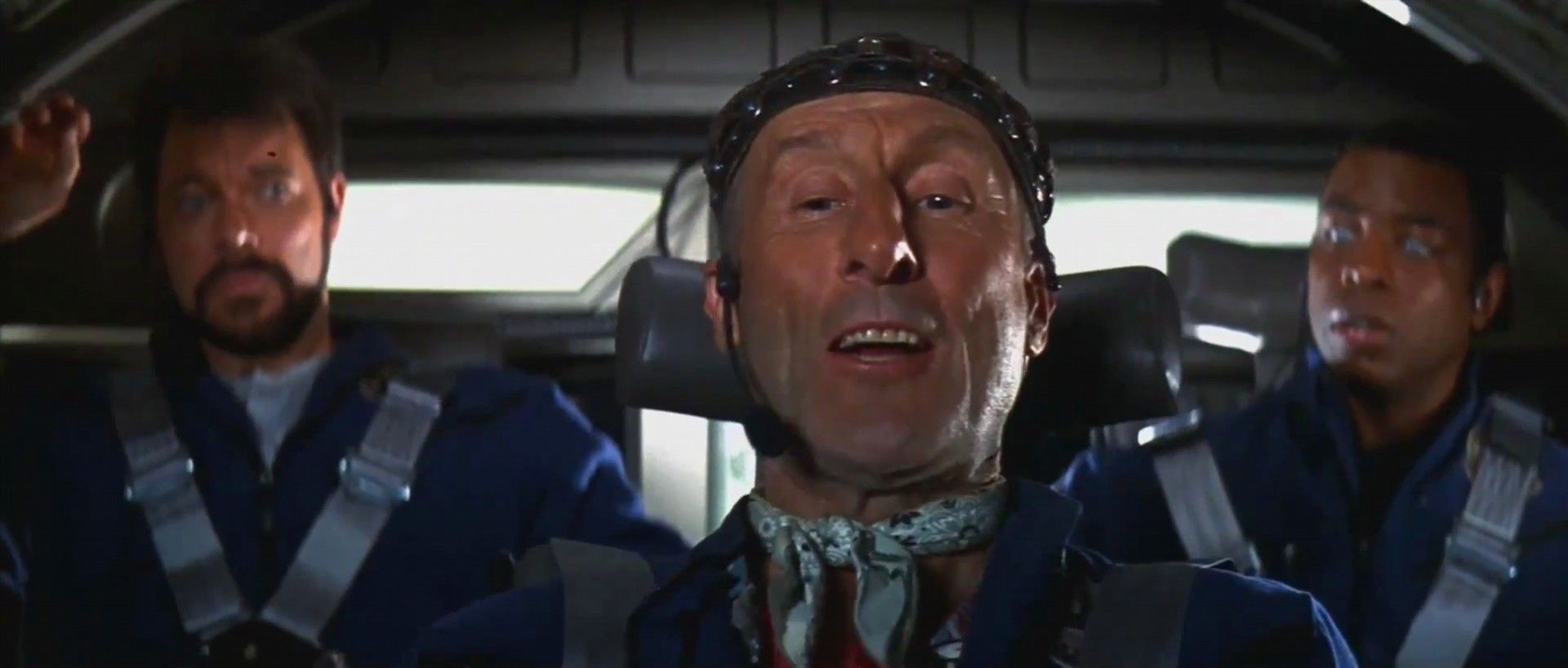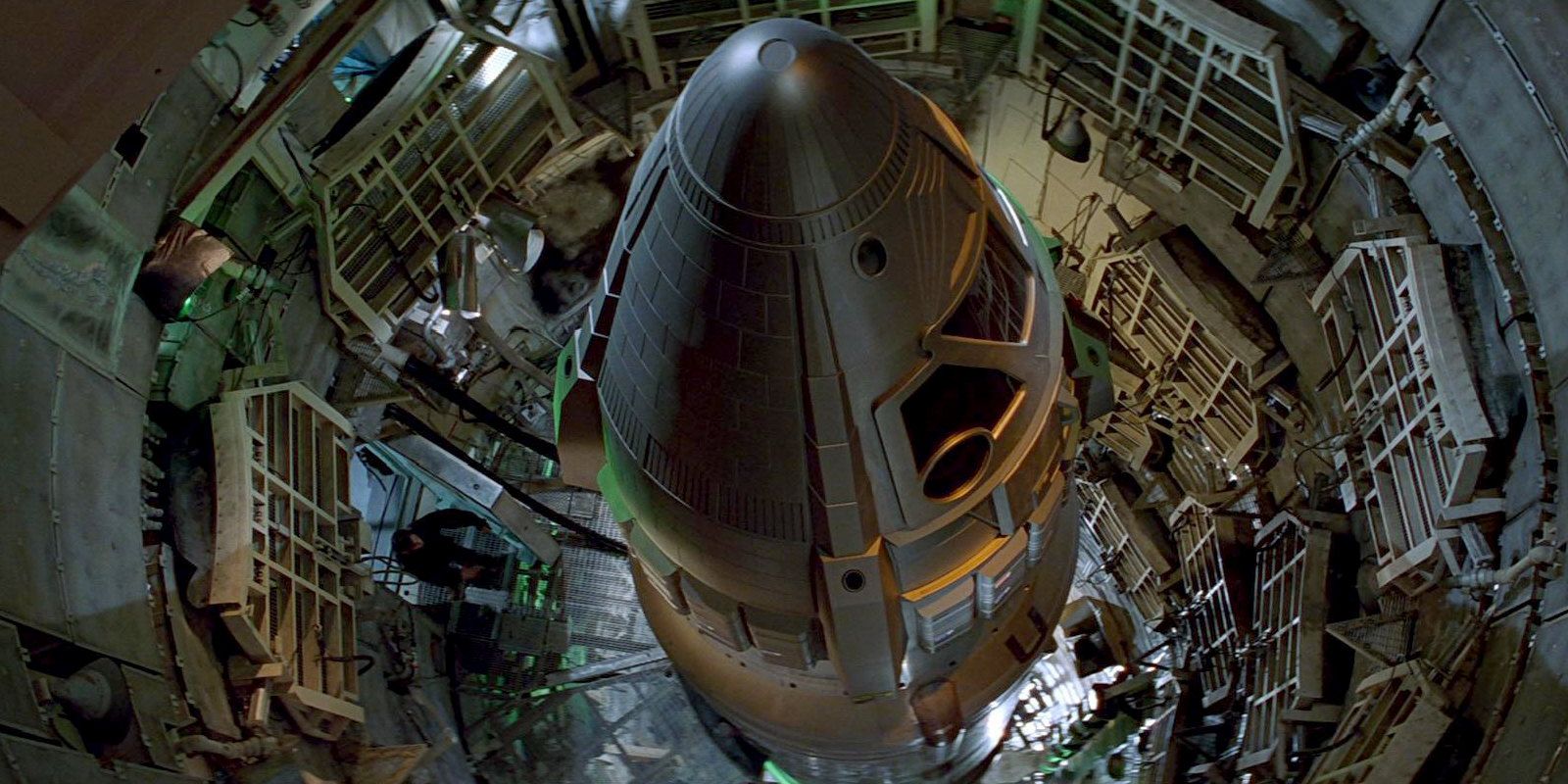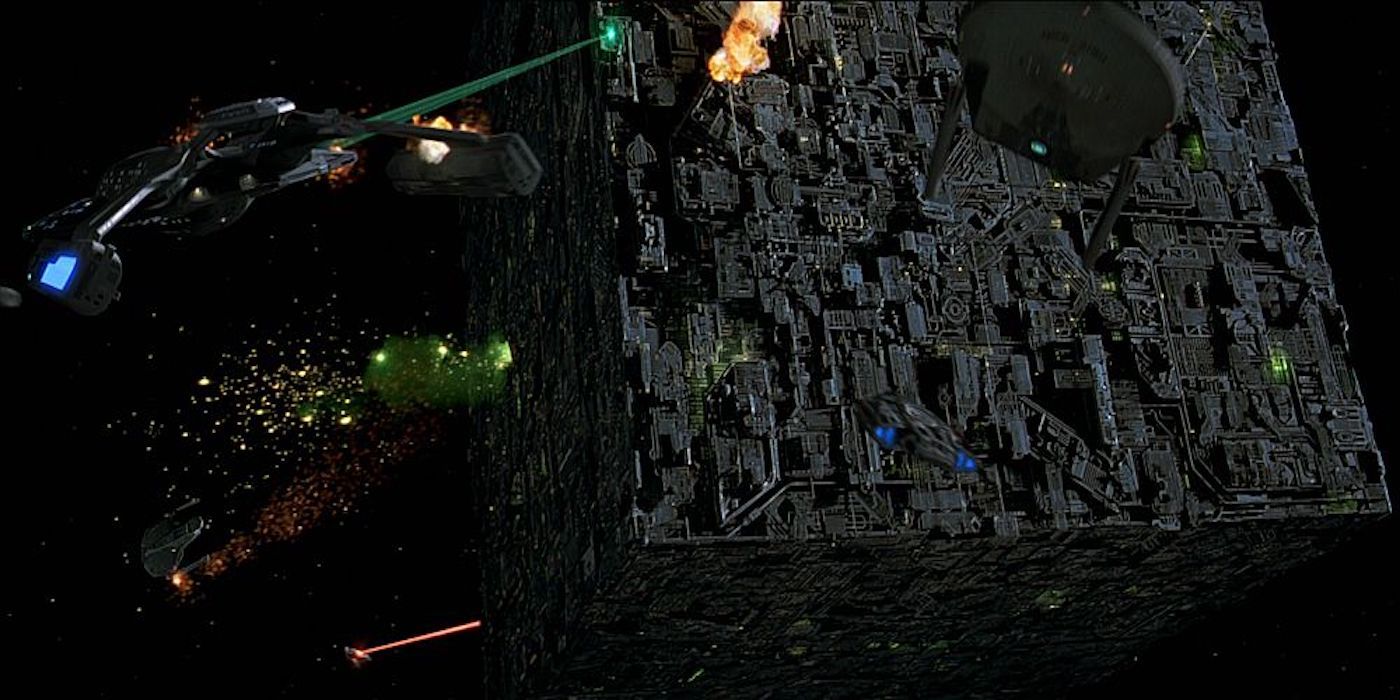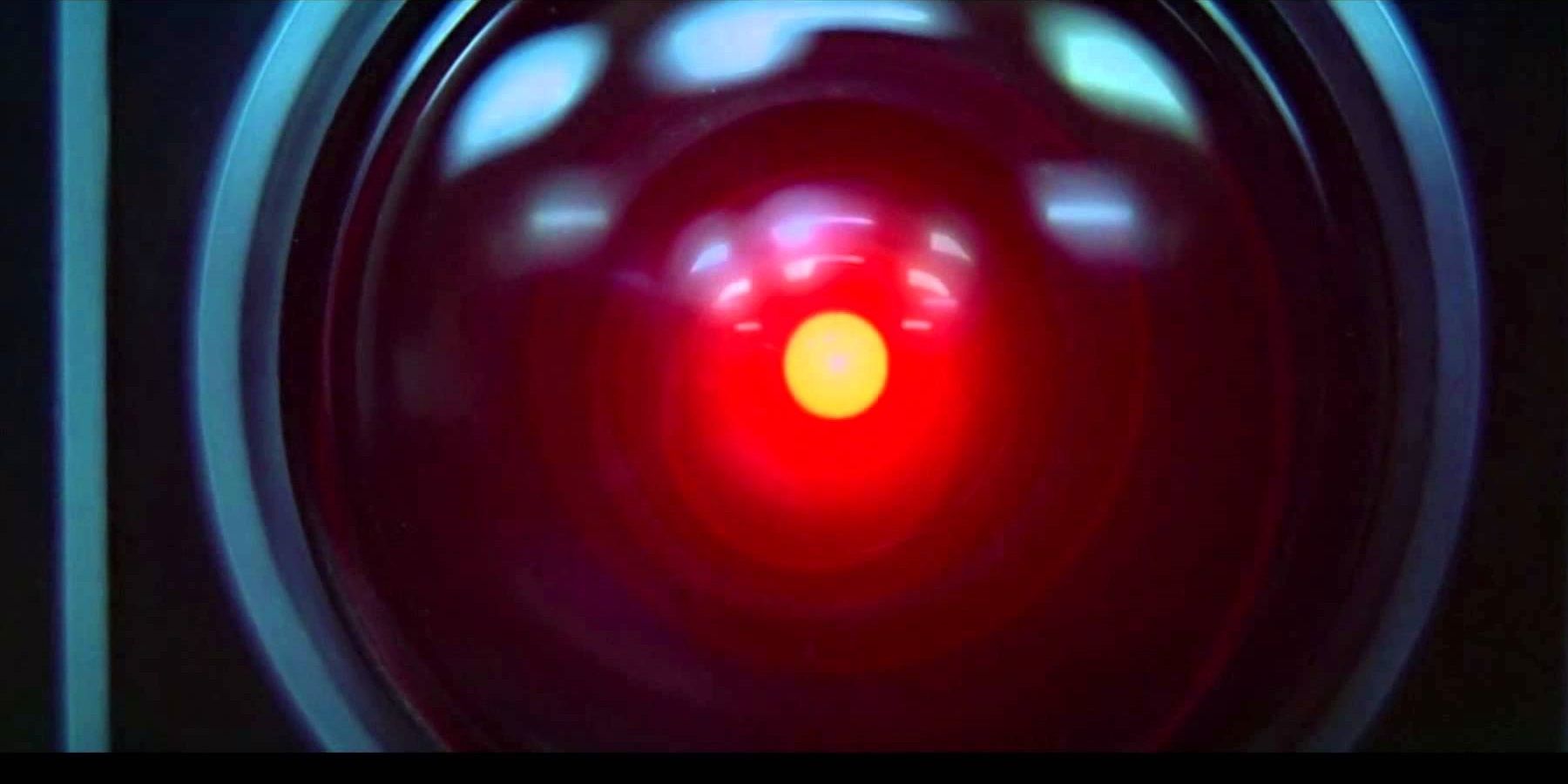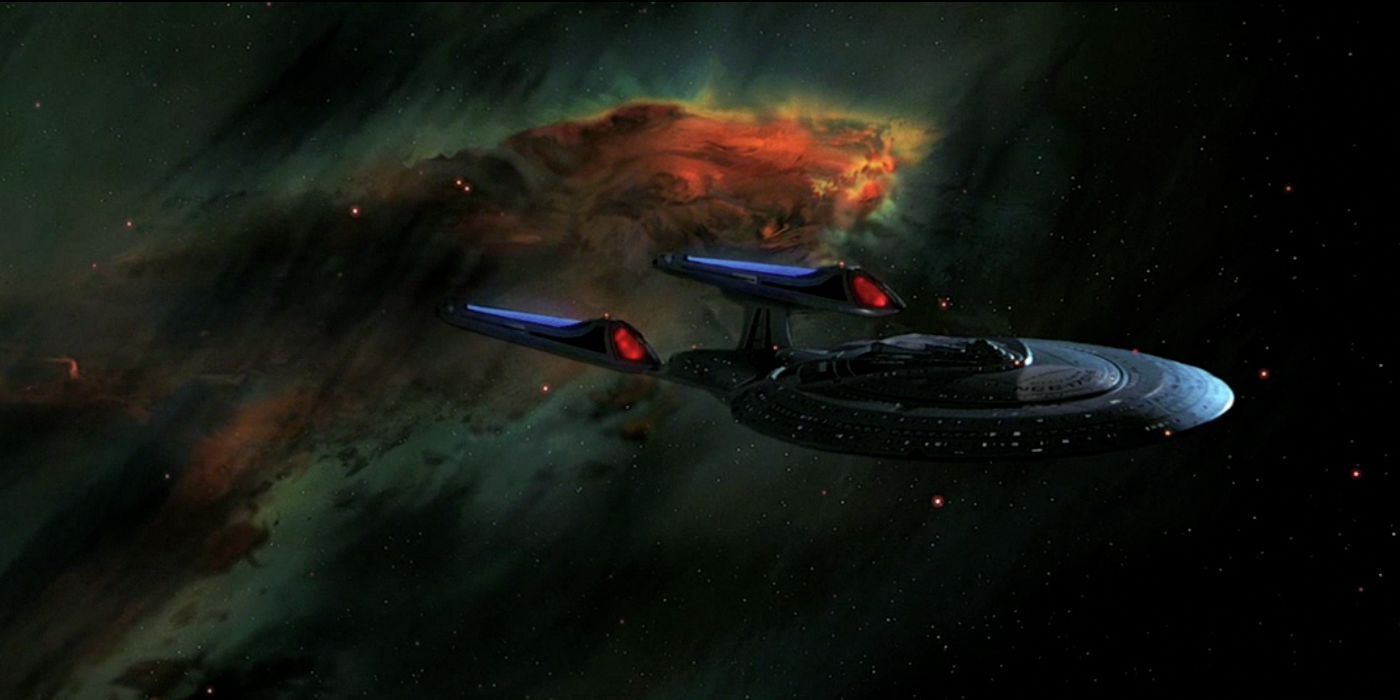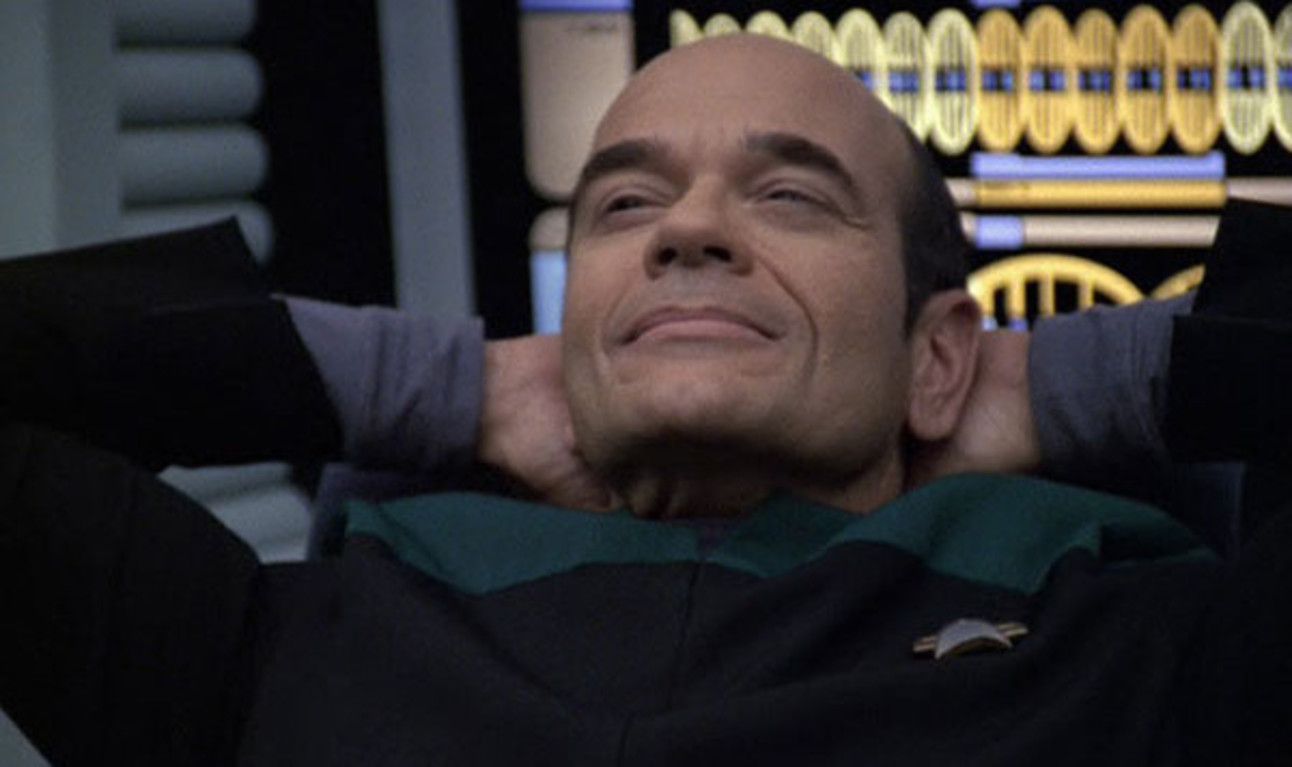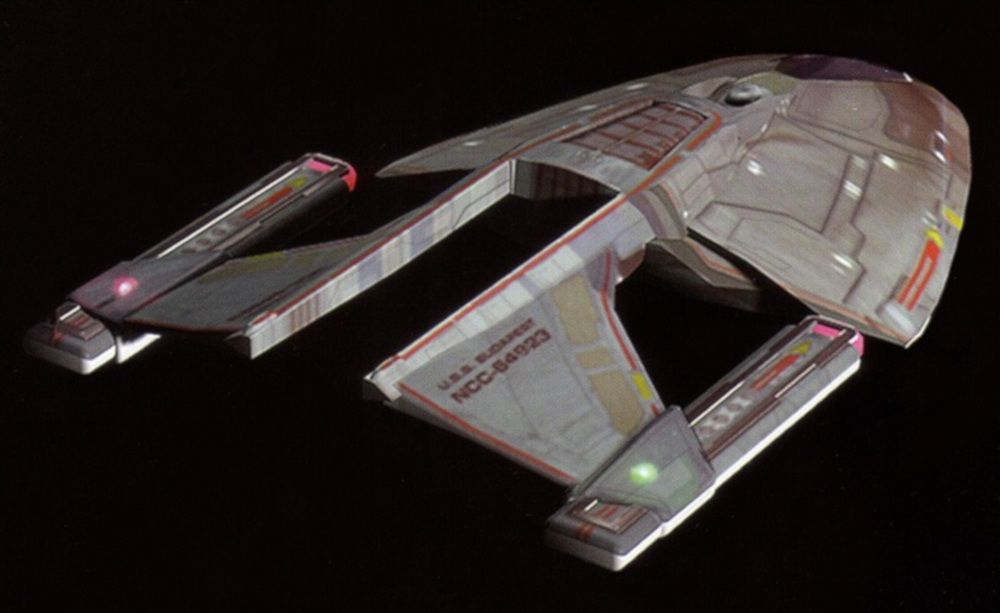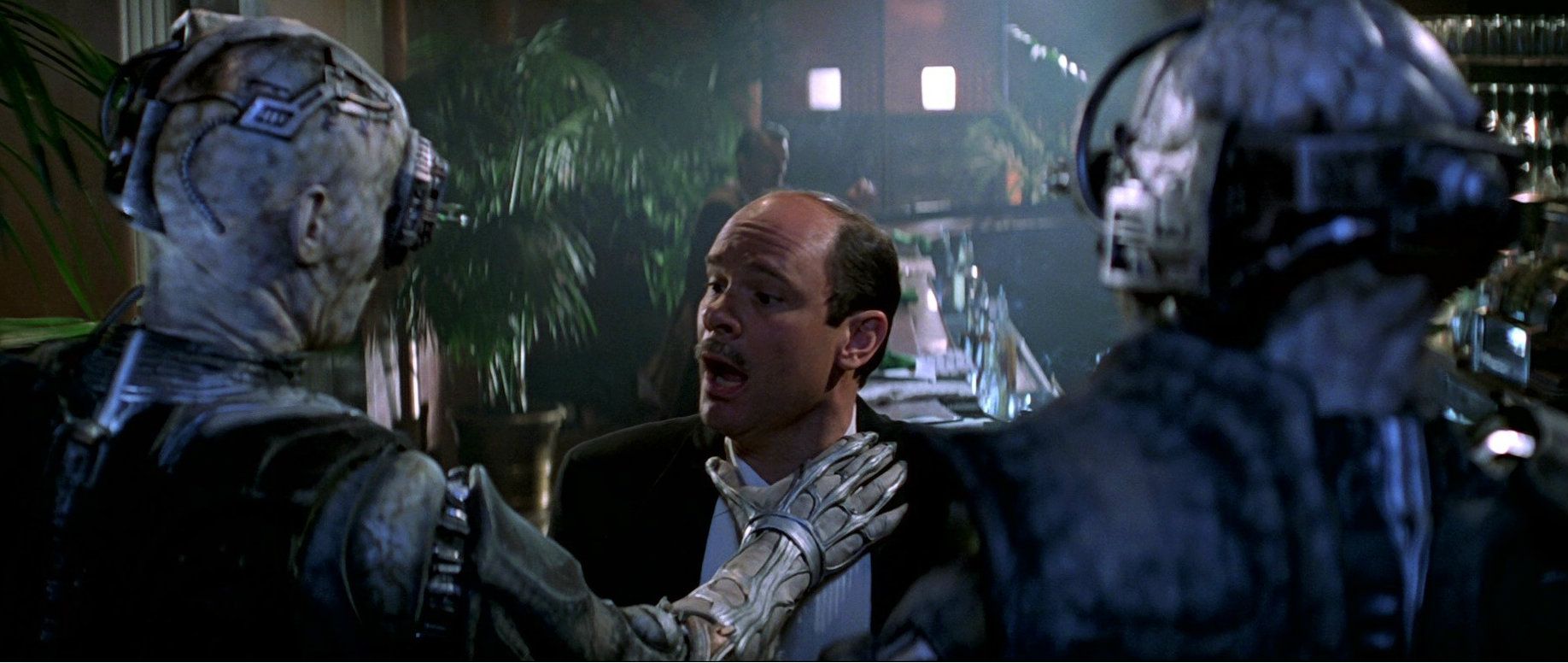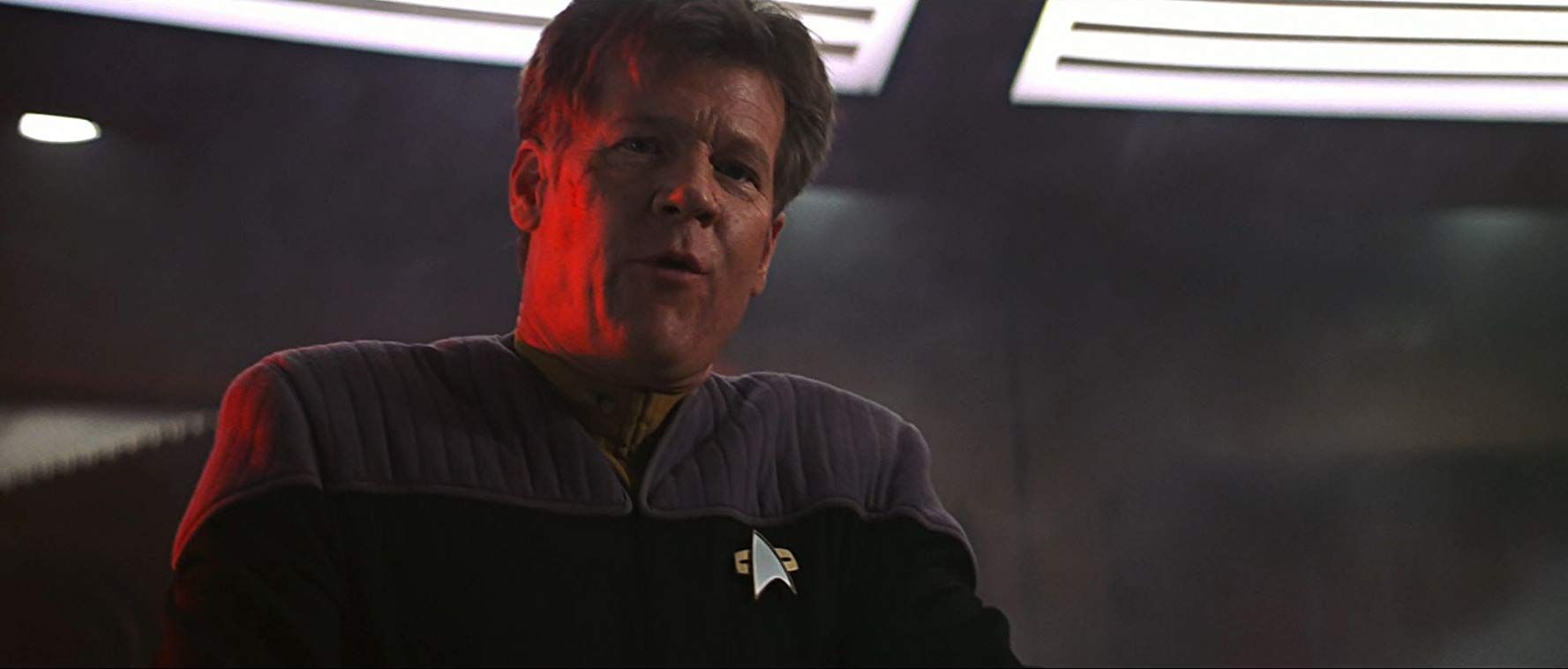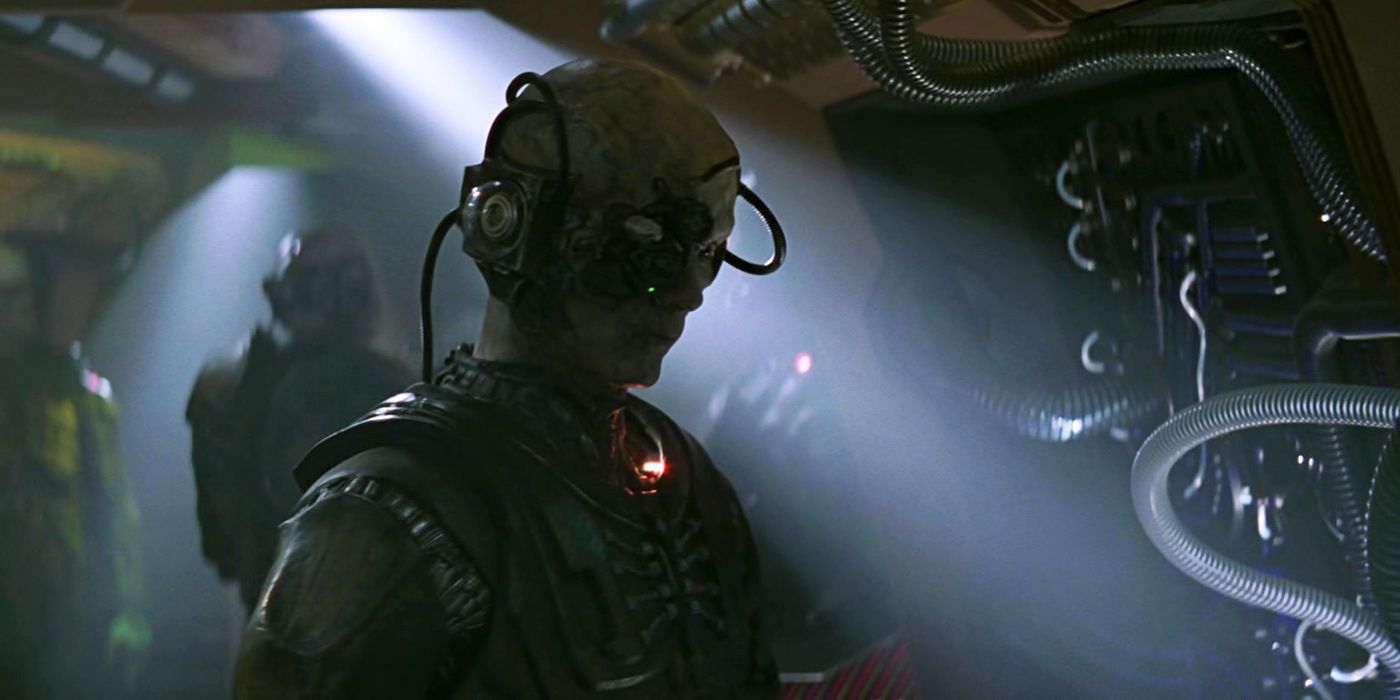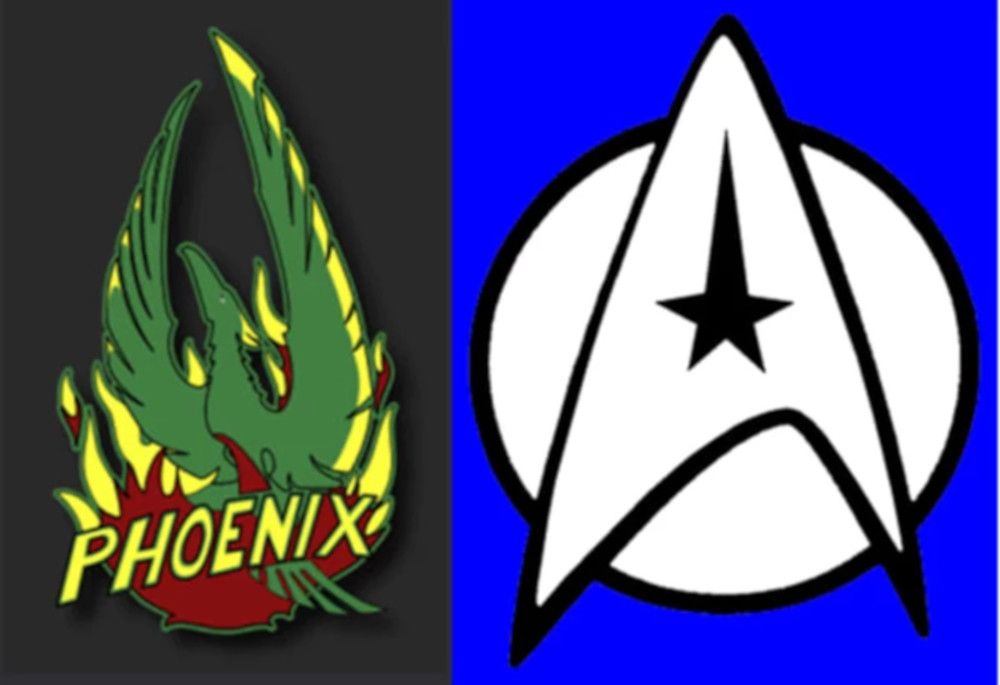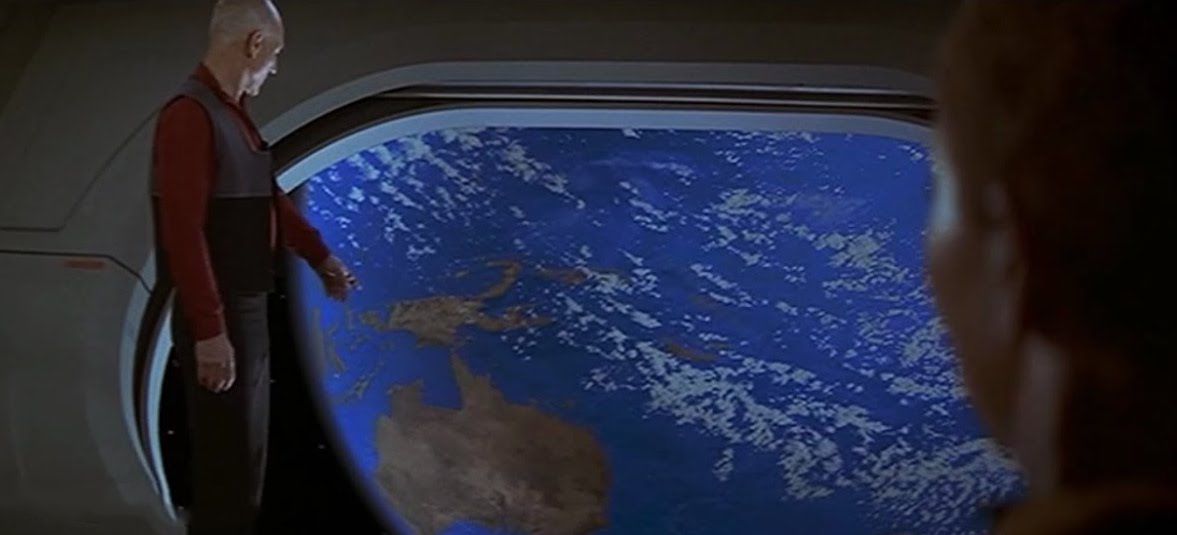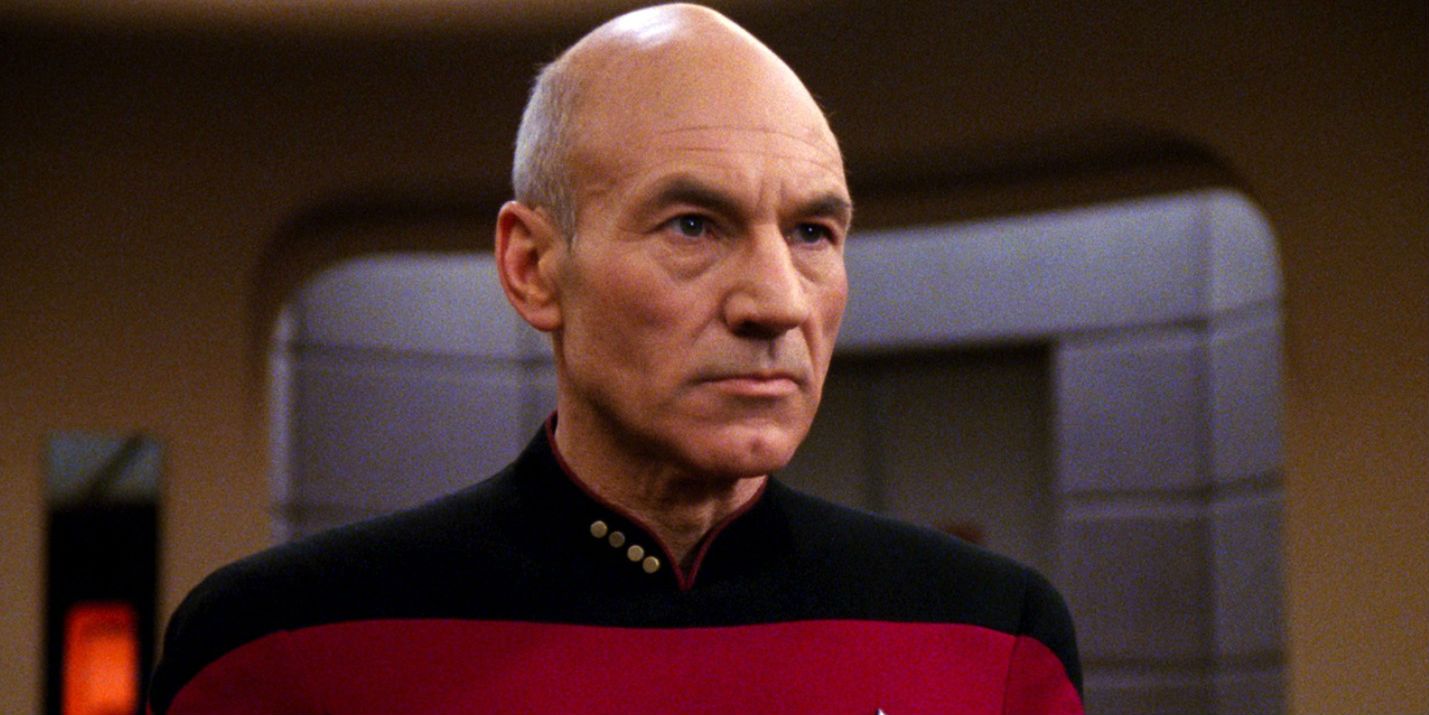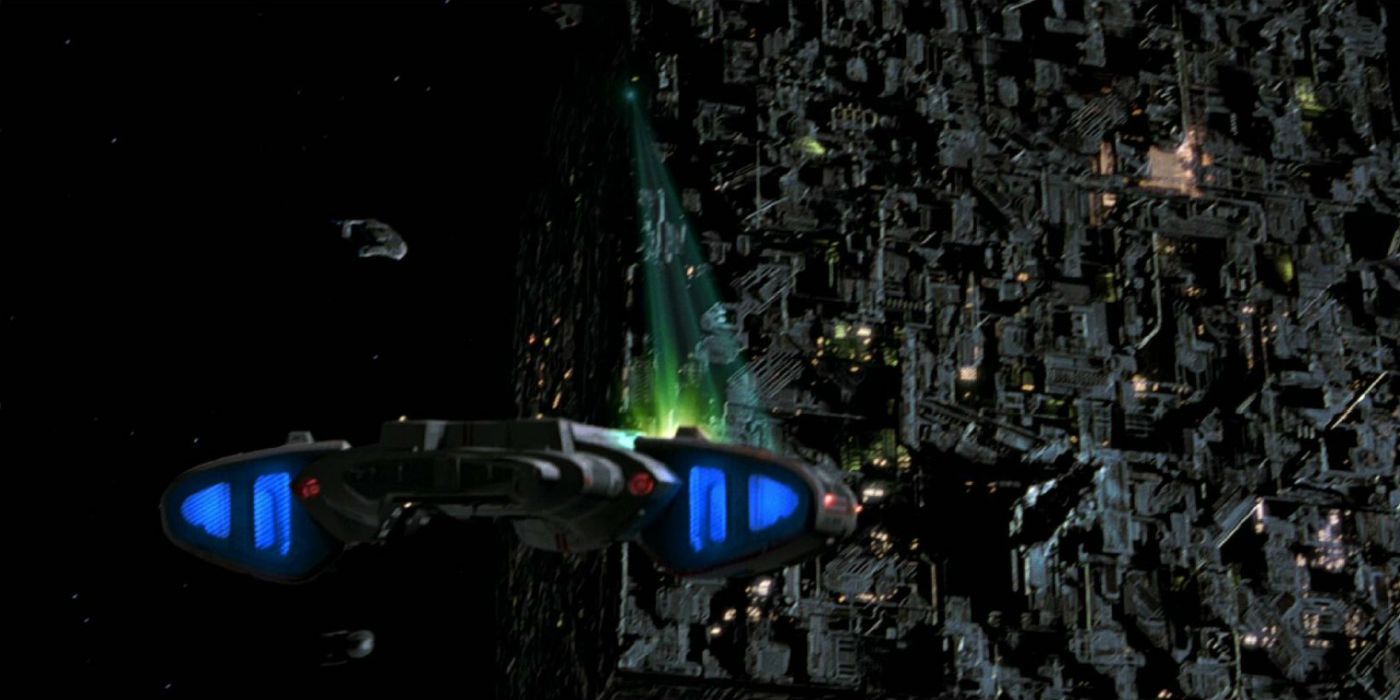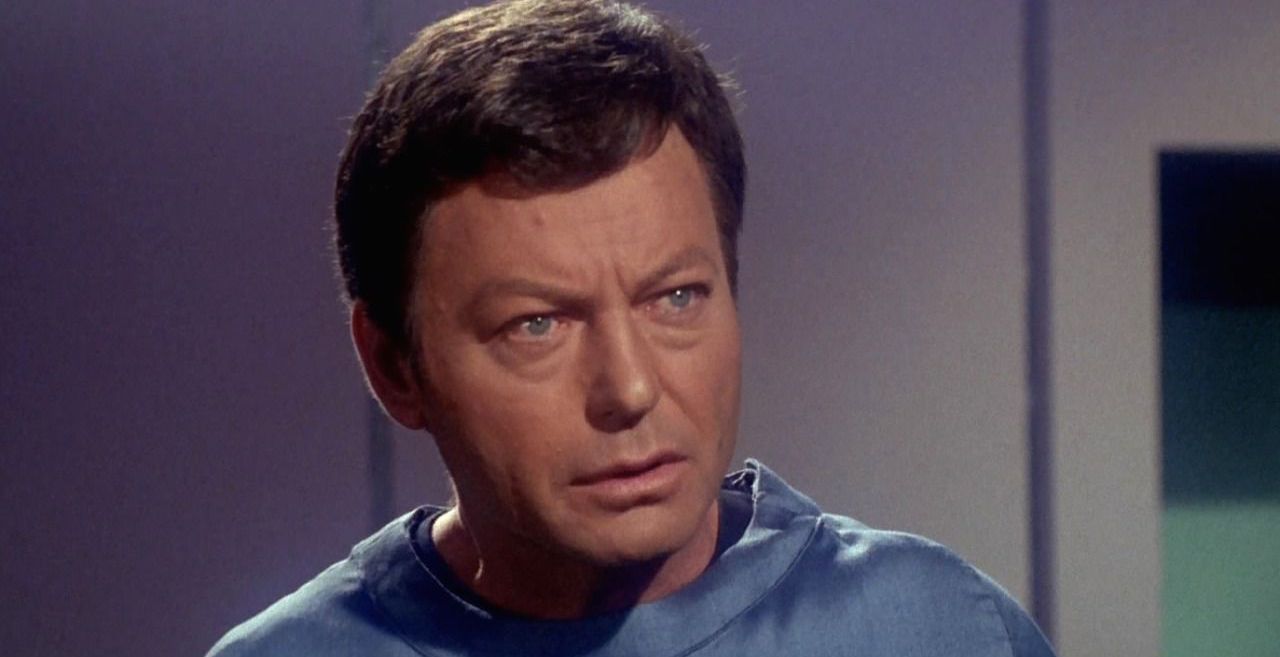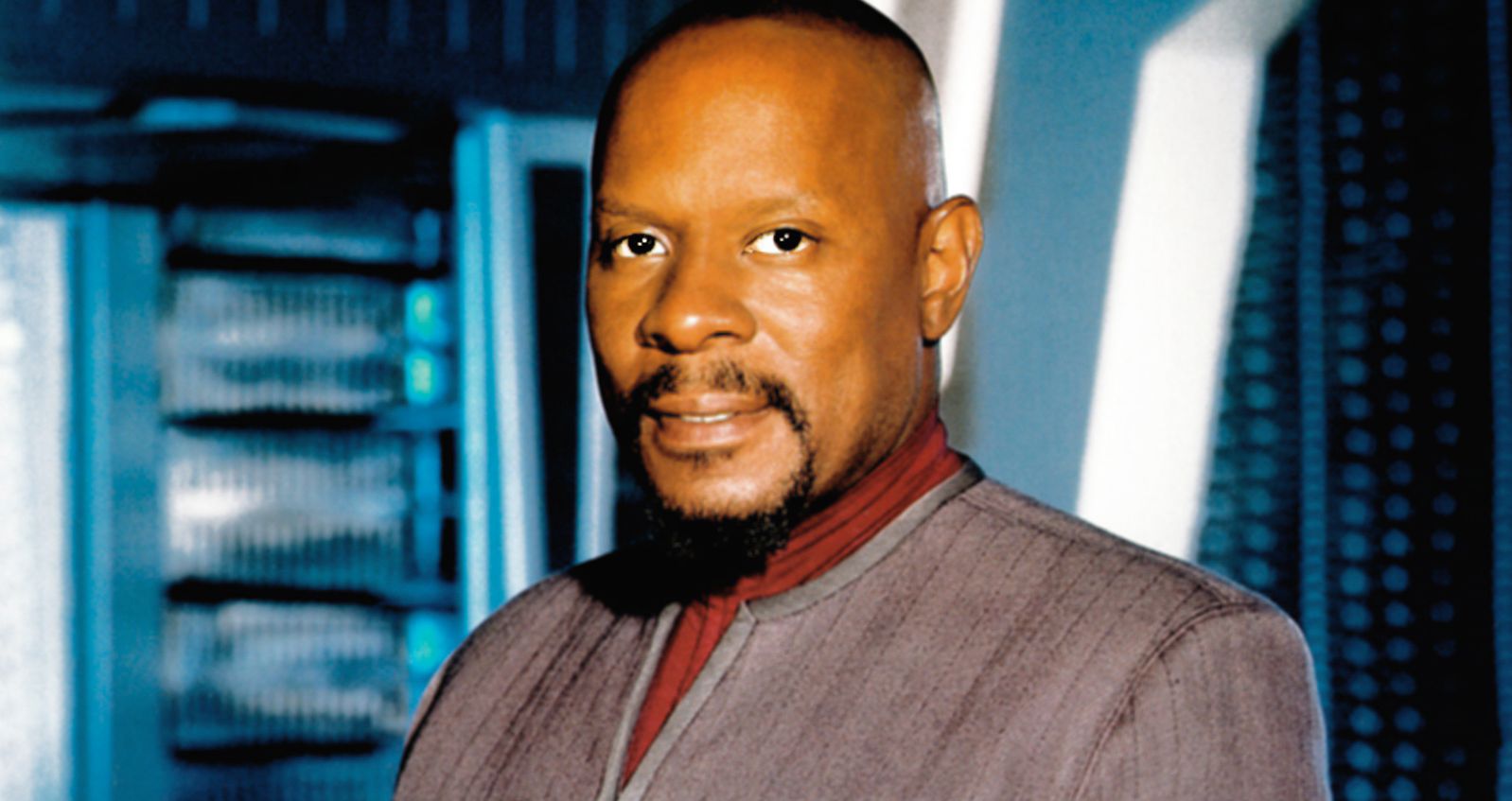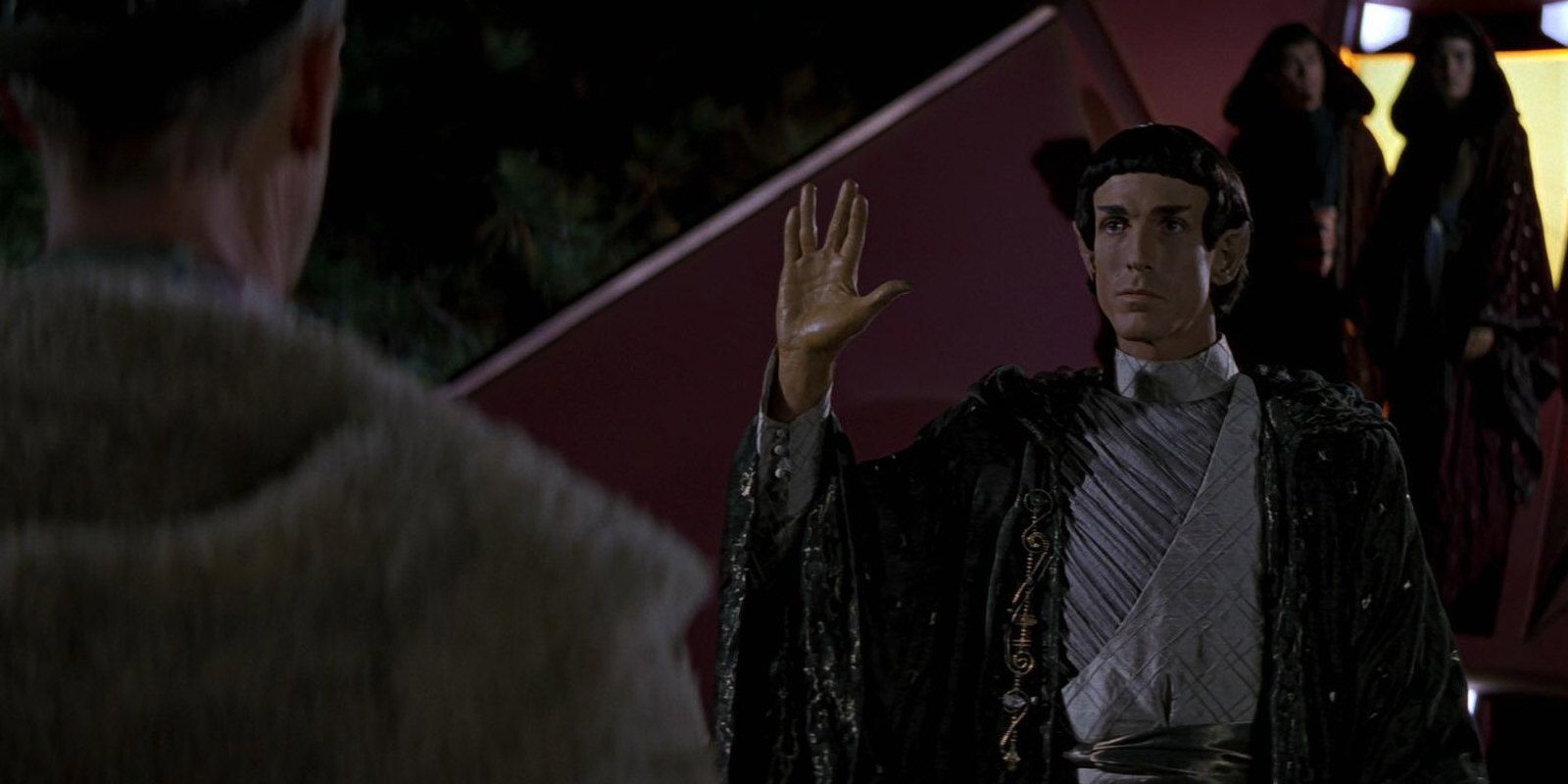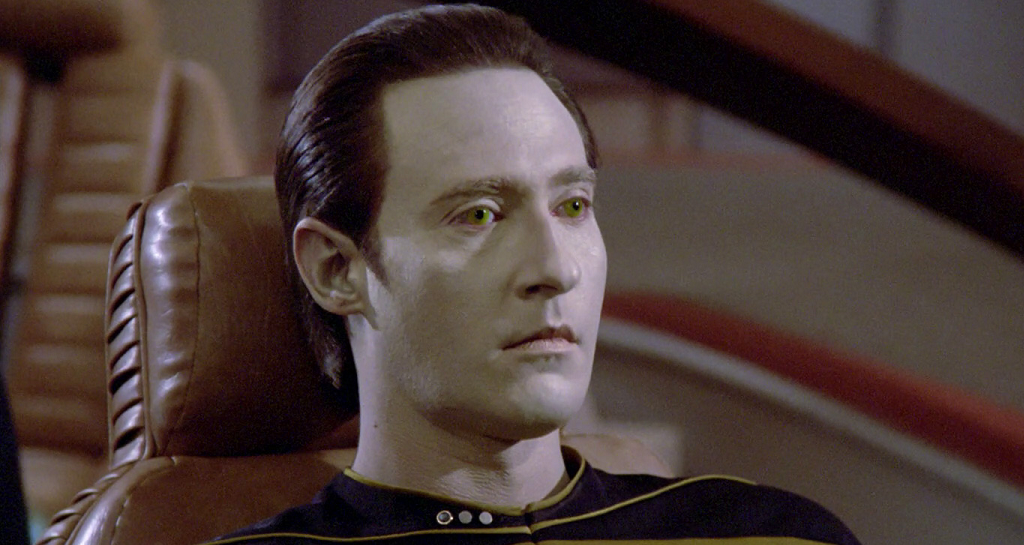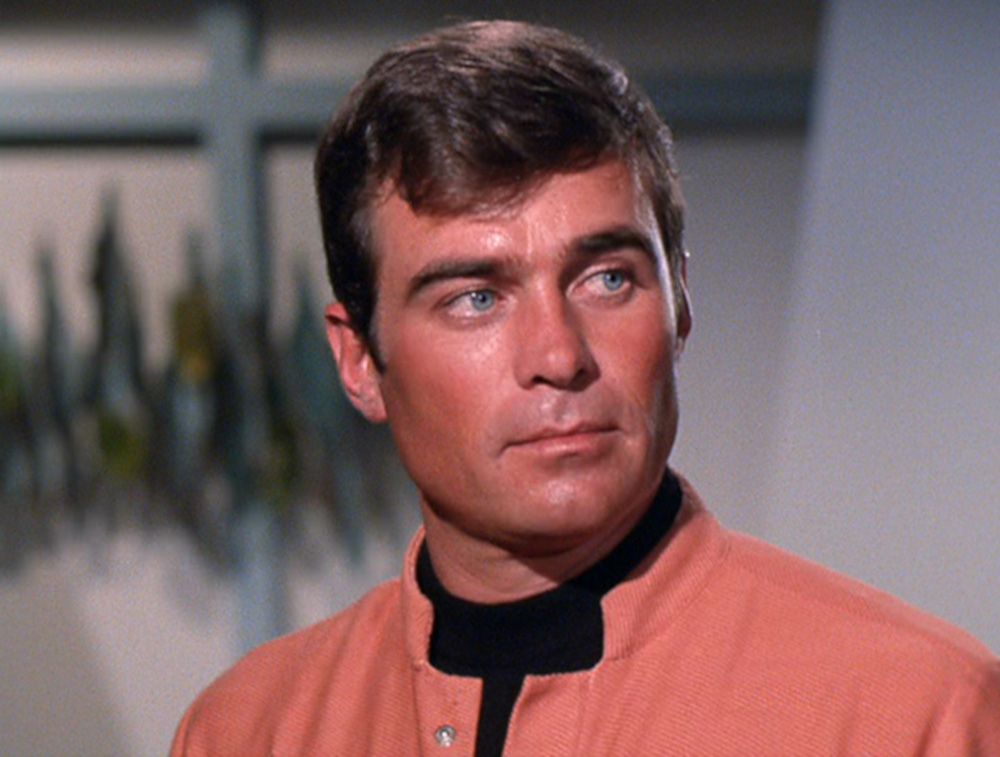Star Trek: First Contact landed in theaters way back in November 1996, and it still remains one of the better received outings by the crew of the USS Enterprise. The first film in the franchise to focus solely on the cast of the Next Generation TV series, First Contact pits Patrick Stewart’s Captain Picard and his allies against merciless hive mind, the Borg.
The stakes have never been higher, either. Indeed, the very existence of the Federation and Starfleet hangs in the balance, due to the Borg’s sneaky scheme to eradicate both by preventing the first meeting between humanity and extra-terrestrial life from happening centuries earlier. It’s up to Picard, Riker, Data, and the rest of the gang to ensure that past events unfold as they should – or Earth is doomed to become the Borg’s latest colony.
As you’d expect from a time travel adventure that’s also part of a long-running sci-fi franchise, First Contact is packed with small nods not only to Star Trek continuity, but to wider pop culture, as well. These minor creative flourishes – which can include anything from a brief cameo, sly line of dialogue or cheeky digital effects Easter egg – are easily overlooked by casual viewers. But hardcore Trekkies? You better believe they spotted each and every one of them, no matter how obscure.
So if you consider yourself a true series hardcore, check out this list of 20 Hidden Details In Star Trek: First Contact Only Super Fans Noticed and discover once and for all if you deserve a place within the final frontier of Trek fandom!
The Borg Make-Up Received An Upgrade
First introduced in Star Trek: The Next Generation, the Borg quickly established themselves as a new and credible recurring threat. So when it came time to choose a chief villain for First Contact, screenwriters Brannon Braga and Ronald D. Moore quickly settled on this cybernetic collective, citing their fearsome reputation.
However, before the Borg made the transition to the big screen, they would needed a visual make-over first. Due to the time and budgetary constraints, the make-up used to realize the Borg on the TV series was kept as simple as possible. As related in Star Trek: The Next Generation Companion, neither of these factors was as much of a concern for the First Contact production crew, which allowed them to considerably enhance the Borg aesthetics to suggest their unwilling hosts have been assimilated from the inside out!
This Isn't James Cromwell's First Star Trek Appearance
The Star Trek: First Contact cast is predominantly populated with the existing Next Generation roster, reprising their TV roles on the big screen. However, the script also features several prominent new characters, which necessitated the hiring of additional actors. For the pivotal role of pioneering space traveler Zefram Cochrane, the producers turned to acclaimed acting veteran James Cromwell – although funnily enough, this wasn’t his first excursion in the Star Trek universe.
On the contrary, Cromwell previously appeared as three other, unrelated characters in episodes of The Next Generation and Deep Space Nine! Fortunately, Cochrane proved sufficiently different from Prime Minister Nayrok, Jaglom Shrek, and Hanok, so there weren’t any continuity issues to fret over, and nobody really seemed to object to Cromwell’s (re)casting.
The Phoenix Shuttle Was Constructed Inside A Real Missile Silo
Not every hidden detail in Star Trek: First Contact constitutes an in-universe Easter egg or continuity callback. Some of these cool factoids relate more to the actual production of the film – like the fact that the exterior shots of Zefram Cochrane’s DIY space craft, the Phoenix, were filmed inside a genuine nuclear missile silo.
Star Trek: The Next Generation Companion confirms that the cast and crew spent four days shooting at the Titan Missile Museum in Arizona, with a fiberglass Phoenix perched atop a real decommissioned warhead. It’s a neat bit of trivia, and it also explains why the huge set – which would otherwise have been too costly to construct – feels so authentic: because it is!
The Millennium Falcon Enters The Fray
Star Trek is set in the 24th Century, whereas rival sci-fi franchise Star Wars takes place a long time ago (in a galaxy far, far away). This would seem to rule out any chance of a crossover between the two iconic properties, but that’s nevertheless exactly what happens in First Contact!
Viewers who keep their eyes peeled during the space battle between the Federation and the Borg will spy the most famous of all Star Wars star-ships, the Millennium Falcon, among the Starfleet ranks. This was an in-joke overseen by visual effects supervisor John Knoll, who – along with the rest of the ILM visual effects team – also worked on Star Wars: Special Edition, providing them easy access to a CG model of Han Solo’s famed smuggling vessel.
A Tip Of The Hat To 2001: A Space Odyssey
Whilst the Star Trek franchise has cerebral elements, at the end of the day, it’s essentially escapist popcorn entertainment which aims to entertain rather than enlighten. But that doesn’t mean that those involved with the various movies and TV series in the series don’t have tremendous respect for other, more highbrow science fiction efforts.
Nowhere is this admiration more apparent than in First Contact’s spacewalk scene, which includes a subtle nod to 2001: A Space Odyssey. In case you missed it, pay attention to the technical readout on the deflector dish controls, and you’ll see the text “MAGLOCK AE35 – a reference to the AE35 antenna dish mentioned by HAL 9000 early on in Stanley Kubrick’s epic 1968 masterpiece.
A New Starship Enterprise Makes Its Debut
As the setting for most Star Trek films and TV series, the USS Enterprise is virtually a character in its own right. Yet despite its constant presence in the franchise, the Enterprise isn’t really one star-ship at all, but several – with various retrofitted or replacement craft bearing the same name. For example, the Enterprise first seen in The Original Series was more accurately known as USS Enterprise (NCC-1701,) which was later superseded by USS Enterprise (NCC-1701-A.)
Casual audiences tend not to notice the aesthetic differences between each incarnation of the Enterprise, even when the changes are quite drastic. So even though the USS Enterprise-D was destroyed in Star Trek: Generations, the majority of viewers probably didn’t notice when the sleeker, more muscular USS Enterprise-E) took its place in First Contact!
Voyager's Doctor Is In
Paramount axed the Star Trek: The Next Generation television series in 1994, shifting the focus of this iteration of the franchise to motion pictures, instead. To fill the void, a new TV show was commissioned, Voyager, which aired from 1995 until 2001. With two separate Trek narratives unfolding simultaneously, this led to occasional shared universe crossovers – like when Robert Picardo’s Emergency Medical Holographic program pops up in First Contact.
Picardo snagged this cameo after convincing the filmmakers that the USS Enterprise should possess similar technology to that seen on the Voyager, right down to sharing the same virtual doctor! True, most moviegoers wouldn’t have been familiar with the EMH, but its presence was a real thrill for hardcore Trekkies.
It's The Only Time We Get To See A Norway Class Ship In Action
The major action set piece in Star Trek: First Contact sees a Starfleet armada square off against a Borg Cube ship. Reasoning that Starfleet would “throw everything it could” at such an implacable foe, visual effects supervisor John Knoll insisted on the inclusion of several never-before-seen star-ships. Among these was the Norway class craft – and amazingly, this would also be the last time these ships would be seen taking part in an on-screen battle.
Comments by production designer David Stipes have seemingly confirmed persistent rumors that the Norway class CG models became corrupted after production on First Contact wrapped. As a result, subsequent effects crews have permanently mothballed the Norway, rather than create new assets!
Several Crew Members Cameo In The Dixon Hill Scene
Easily the most surreal moment in Star Trek: First Contact occurs on the Enterprise’s holodeck, where Captain Picard and Lily Sloane try to evade the Borg inside a faux 1940s nightclub. Known as the Dixon Hill, this holographic nightspot faithfully recreates the atmosphere of a classic noir flick, complete with period-appropriate music, costumes and characters.
Although the majority of the background players in the Dixon Hill were played by uncredited extras, a handful of crew members joined in the fun, too. Among those who portray club patrons are screenwriter Brannon Braga and stunt coordinator Ronnie Rondell. Better still, actor Ethan Phillips – known to Star Trek: Voyager fans as Neelix – cameos as the Dixon Hill’s maître d'!
Lieutenant Daniels Gets His Start
One of the unexpected bonuses of working on a Star Trek installment is that what starts out as a one-off bit part can quickly evolve into a recurring minor role. Michael Horton’s turn as Lieutenant Daniels in First Contact is a prime example of this. Here, he’s billed as “Security Officer,” and most viewers would barely remember his fleeting moments of screen-time.
However, Horton was brought back for 1998 sequel Insurrection, where he was credited as Lieutenant Daniels – and more discerning moviegoers immediately began speculating that Daniels and “Security Officer” were one and the same. The filmmakers subsequently confirmed that both characters portrayed by Horton were intended to be the same guy, establishing him as an official supporting character – and retroactively making First Contact his first appearance!
The Borg's Lights Flicker In Morse Code
A neat design element in Star Trek: First Contact that underscores the inhuman, cybernetic nature of the villainous Borg are the blinking lights present on their eyepieces. At first glance, it might appear that these lights are flickering randomly – but anyone who knows their Morse code will soon realize that the opposite is true!
As revealed in Cinefantastique article “The Next Generation goes Solo”, the make-up and prosthetics team programmed the Borg’s lights to spell out actual words via the famous encoding scheme. Specifically, the eyepieces are transmitting the names of production crew members who worked on the film – a cute touch that pays tribute to the hard work of everyone who made First Contact a reality.
The Phoenix's Logo Resembles Another, More Famous Emblem
Part of the fun of time travel stories like Star Trek: First Contact is that the creative team is able to insert clever allusions to the contemporary canon into the period sequences. By doing so, they’re able to imply the unseen history behind certain characters and organisations, which led them to develop into their familiar form.
Need an example? Consider the logo on Zefram Cochrane’s prototype star-ship, the Phoenix. Although it’s barely seen on screen, if you do manage to spot it, you’ll identify its uncanny resemblance to the Starfleet emblem. This was no doubt a smart attempt by production designer Herman Zimmerman to further underscore Cochrane’s pivotal role in the intergalactic peacekeeping initiative’s formative years.
Several Sets Were Re-Used From Previous Star Trek Productions
With the Enterprise-E supplanting the Enterprise-D in First Contact, several sets were constructed to portray the remodeled bridge, ready room and engineering section. At the same time, the producers were eager not to spend too much of the flick’s $45 million budget building new interiors when there were already pre-built Star Trek sets available for recycling.
Eagle-eyed Trekkies may be able to tell that the Enterprise-E’s observation room is similar to that of Enterprise-D, since it’s the set used in Generations, only expanded and sporting a fresh coat of paint. Likewise, sick bay on the Enterprise-E is, in reality, the redressed sick bay of Voyager’s titular star-ship, while the bridge of the USS Defiant was carried over verbatim from Deep Space Nine.
Picard Wears His Old Uniform In One Scene
The Starfleet jumpsuits introduced in Star Trek: The Next Generation represented a big step up from those worn by the USS Enterprise crew in The Original Series. Even so, these uniforms still weren’t quite sophisticated enough for the big screen, which is why costume designer Bob Blackman revised the design to incorporate military-inspired details like textured outerwear with padded shoulders.
But that doesn’t mean that the classic Next Generation outfits don’t play a part in proceedings – although we’re willing to bet this only registered with hardcore fans. During the opening nightmare sequence, Captain Picard is dressed in his Next Generation kit, which is fitting, considering this scene is essentially a flashback to events depicted in that show.
The USS Defiant Lives To Fight Another Day
It’s all hands on deck when the Starfleet armada confronts the Borg in Star Trek: First Contact – and that includes the USS Defiant, which appears as a direct tie-in with TV series Deep Space Nine. Intriguingly, the screenplay originally called for this warship to be annihilated during the skirmish, which obviously would have had massive ramifications for the future of DS9.
This wasn’t lost on producer Ira Steven Behr, who promptly nixed the idea and requested that the script be rewritten to make it clear that the Defiant escaped relatively unscathed. So while general audiences barely paid any heed to an added line of dialogue that described the ship as “adrift, but salvageable,” serious Trekkies breathed a collective sigh of relief!
There's A Shout-Out To Doctor McCoy
Star Trek: First Contact represents the first clean break between the films starring the cast of The Original Series and those headlined by the Next Generation crew. This comes after William Shatner’s Captain Kirk symbolically passed the torch to Patrick Stewart’s Captain Picard in the previous movie, Generations.
Despite their desire to forge a new path for the franchise with First Contact, that doesn’t mean that the filmmakers wanted to ignore Star Trek’s rich history entirely, though. That’s why you’ll hear true Trekkies chuckle when the Emergency Medical Hologram program protests “I’m a doctor, not a doorstop!” – because it’s a sly reference to similar outbursts by Doctor McCoy in The Original Series and its tie-in films.
The Leo Constellation Features Prominently (Again)
When the Borg move against Zefram Cochrane’s defenseless commune, the inebriated scientist notes their position as being within the Leo constellation. Now, there’s a chance that the team behind First Contact chose this cluster of stars at random – but we’re pretty convinced that they didn’t.
Why? Because the Leo constellation has been a notable part of Star Trek lore over the years, something that the filmmakers were almost certainly aware of. For starters, it’s the same part of space where the Borg previously crushed Starfleet forces in The Next Generation episode “The Best of Both Worlds”, which is a nice callback. What’s more, this event also links into the backstory of Commander Sisko in Voyager, so neatly ties together several properties in the franchise.
Spock's Ancestor
Ok, we’ll admit it: this entry isn’t exactly backed up anything we see or hear on screen in First Contact – it’s not confirmed either in dialogue, or even by referring to the closing credits. All the same, this list wouldn’t feel complete without an acknowledgement that the Vulcan ambassador who greets Zefram Cochrane during the finale is Solkar, Mister Spock’s great-grandfather!
This is supported by Star Trek III: The Search for Spock, which establishes that Solkar was the Vulcan dispatched to initiate diplomatic relations with the Earth. Since this is the very event portrayed as First Contact draws to a close, we’re confident that the pointy-eared alien in this scene is none other than Spock’s great-grandpop.
Acknowledging Data's Past
The Star Trek: First Contact story is admirably accessible for franchise newcomers, particularly when you remember that it was the ninth installment in the series overall. That said, screenwriters Brannon Braga and Ronald D. Moore still draw heavily from the continuity of the Next Generation TV series.
The most obvious reference to Next Generation canon is Picard’s previous assimilation by the Borg, which drives his character arc in the film. Far more subtle is the exchange between Data and the Borg Queen where the pair discuss the android’s sexuality. Here, Data’s responses allude to the events of “The Naked Now” – a Season 1 episode of The Next Generation – and, incidentally, establishes that the timeline of that series unfolds more or less in real time.
Acknowledging Cochrane's Origins
In many ways, Star Trek: First Contact is a Zefram Cochrane origin story, seeing as how his journey from disillusioned drunk to a heroic (yet flawed) figure represents the heart of the movie. At the same time, First Contact isn’t the first time Cochrane has appeared on-screen. That honor goes to The Original Series episode “Metamorphosis,” where the Enterprise crew discover that the legendary pioneer’s lifespan has been mystically extended by more than a century.
In tribute to Cochrane’s earlier appearance, the First Contact production design team labelled two adjacent buttons in the Phoenix cockpit “TOS 3” and “TOS 8.” If you’re wondering what this means, ask a genuine Trekkie – they’ll tell you that combined, the buttons are a reference to the 38th episode of The Original Series:“Metamorphosis!”
–
Did we miss out any hidden details in Star Trek: First Contact? Let us know in the comments!

